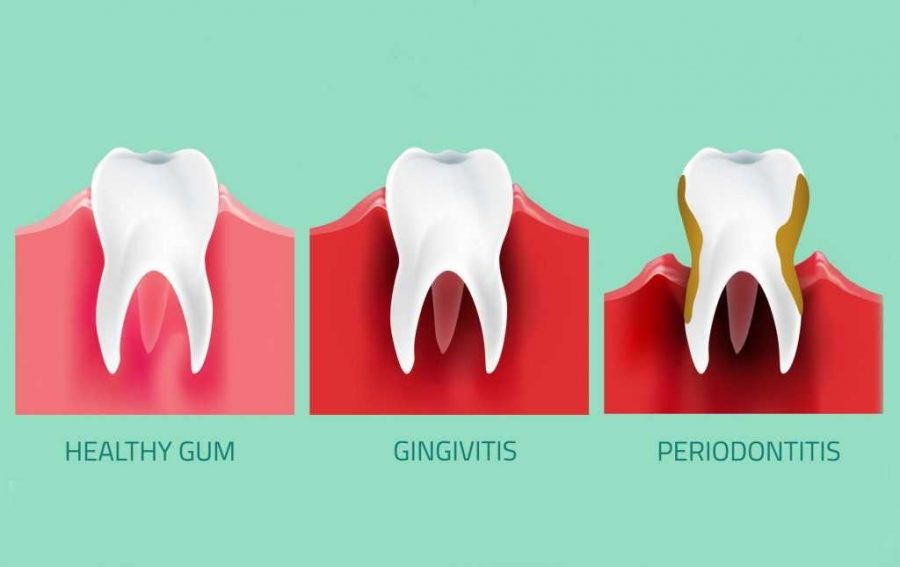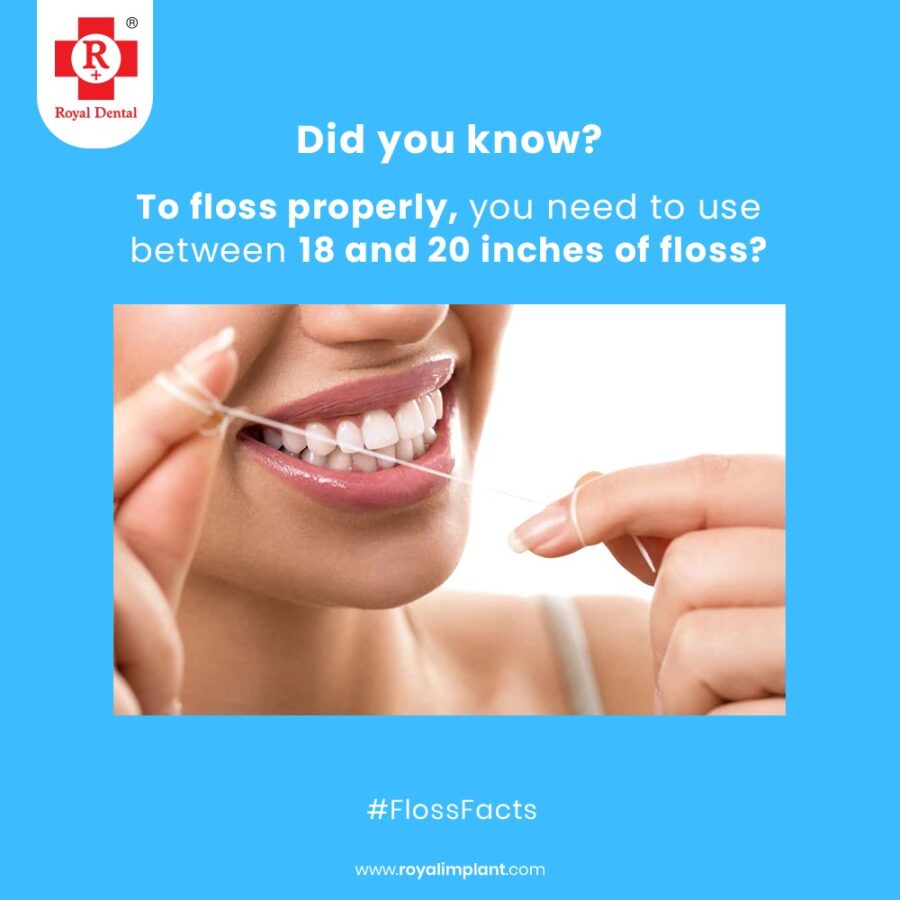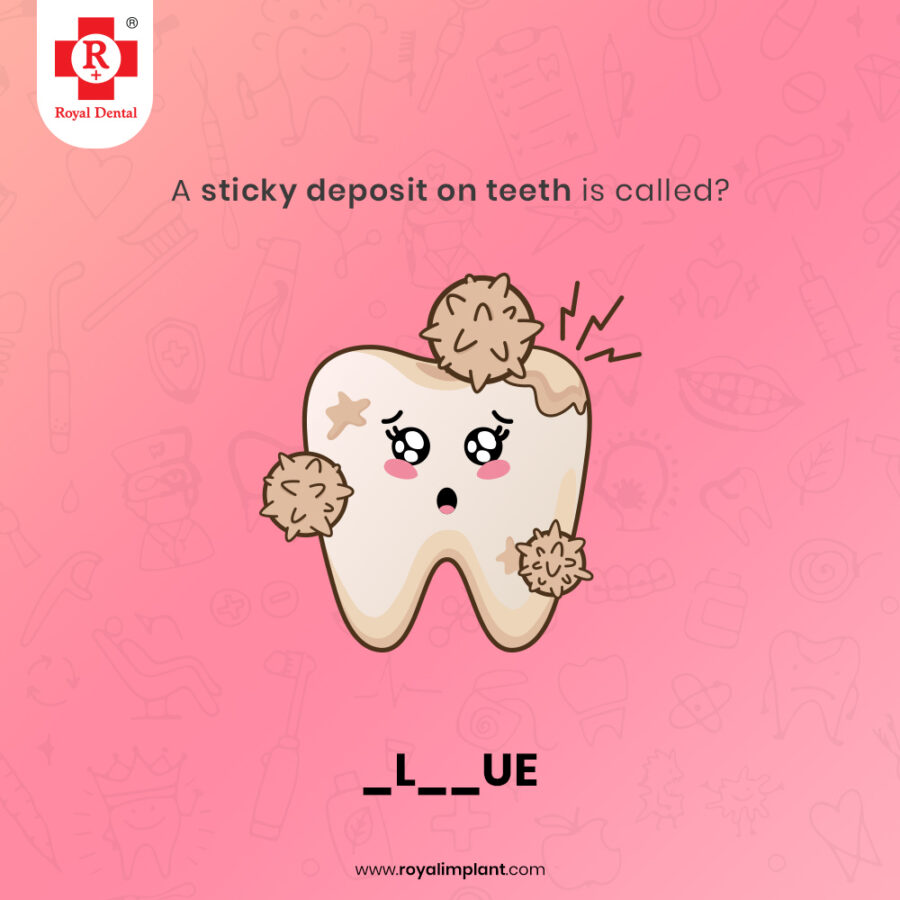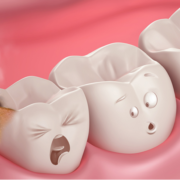Dental plaque is a film of bacteria that sticks to the surface of your teeth. It’s usually harmless, but left untreated it can lead to gingivitis and periodontitis, both potentially serious conditions. So how can you tell whether you have excess plaque on your teeth? Sadly, there’s no magic probe that can detect hidden plaque. But there are some warning signs you should take note of!
You have bad breath (also known as halitosis)
Bad breath is a sign of gum disease. And while it’s not the only indication of gum disease, it’s a strong sign you should keep an eye on. It’s caused by volatile sulphur compounds (VSC) that are produced by oral bacteria during the process of breaking down dietary fibers. Gum disease is caused by poor oral hygiene practices, such as failing to brush your teeth effectively, flossing infrequently, and not visiting the dentist regularly. These practices can lead to dental plaque that’s left untreated for a long period of time. If you have bad breath, you should investigate the cause and take action to stop it before it becomes dental plaque and then gum disease.

Your gums bleed when you brush and floss
This is a sign that you have some gum disease. It’s common in people with poor oral hygiene practices, but it’s easy to detect and treat. Gum disease can progress to bone loss and tooth loss, so it’s important to have it diagnosed and treated by a dentist. Gum disease is often indicated by red, swollen gums. If your gums bleed when you brush and floss, you could be at risk of developing gingivitis and then gum disease.

Gum disease is caused by plaque on the teeth as well as poor oral hygiene such as infrequent brushing and flossing. It can be detected by a red, swollen gums that bleed when you brush and floss. If gum disease is detected, it can be treated with antibiotics, surgery and/or more rigorous oral hygiene.
Your gums are red or swollen, which is called gingivitis
Gingivitis is an early stage of gum disease. The gums get red and swollen, and they can bleed easily when you brush and floss. Gingivitis is not a serious condition, but it is something that you should address. Left untreated, it can easily progress to periodontitis, which is a serious disease. Gingivitis is caused by bacterial plaque that sticks to the teeth and gums and cannot be removed by normal brushing.
Flossing is the only way to remove this bacterial plaque. It’s often caused by insufficient oral hygiene or a weakened immune system. Gingivitis is easy to treat with professional dental care. It is treated with a special cleaning procedure and antibiotics if necessary. Gingivitis can be prevented by brushing teeth at least twice daily and flossing daily.
You have bad breath and your gums bleed when you brush and floss (interdental periodontitis)
Interdental periodontitis is a condition where plaque has grown between your teeth. It’s a serious condition and it’s a precursor to gum disease. Bad breath and bleeding gums are standard symptoms of interdental periodontitis, but they’re also common in gum disease. You need to differentiate between the two conditions. Interdental periodontitis is caused by dental plaque that forms a sticky substance that is nearly impossible to remove.

It tends to form in the areas between the teeth and the gums – hence the name. If plaque is not removed for several years, it creates an environment for bacteria that leads to the onset of gum disease. Left untreated, it can easily progress to periodontitis, which is a serious disease.
Dental plaque can lead to tooth loss and gum disease.
Dental plaque is a sticky substance that collects on your teeth, especially if you don’t floss regularly. The left unchecked, it can lead to tooth loss and gum disease. If you have plaque on your teeth and don’t clean it off with floss and toothbrushes, it’ll start to build up and harden into tartar. If you don’t clean it off, it’ll eventually calcify and become difficult to remove.

Bad breath is a sign that plaque has formed on your teeth and that it’s beginning to calcify. It’s easy to cure with a thorough hygiene regime. Bad breath can also be an indication that you have gum disease. If your teeth are covered in plaque and you’re having some bleeding, then it’s possible that you have gum disease. It’s easy to cure too, but it can become a serious disease if left untreated.
Dental plaque is a precursor to gum disease.
Dental plaque is a precursor to gum disease. If you have plaque on your teeth and don’t clean it off with floss and toothbrushes, it’ll start to build up and harden into tartar. If you don’t clean it off, it’ll eventually calcify and become difficult to remove. Bad breath is a sign that plaque has formed on your teeth and that it’s beginning to calcify. It’s easy to cure with a thorough hygiene regime.
Bad breath can also be an indication that you have gum disease. If your teeth are covered in plaque and you’re having some bleeding, then it’s possible that you have gum disease. It’s easy to cure too, but it can become a serious disease if left untreated.
Conclusion
The key takeaway here is that plaque is a precursor to gum disease. If you detect signs of dental plaque, you need to take action to prevent it from progressing to a more serious level of disease. The easiest way to do this is to take more care in your dental hygiene practices.






